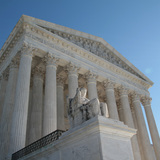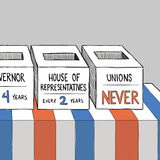
Despite a clear and decisive ruling by the Supreme Court in Janus v. AFSCME that frees public employees from being forced to pay a government union, some states will need to revisit current regulations and statutes that may prevent workers from exercising

Most public employees have not had an opportunity to vote on the union at their workplace. Public employees deserve worker voting rights to periodically vote on what union represents them in the workplace.

Public employees across the country can choose whether or not to pay a union. However, in 23 states unions can still get private sector employees fired for not paying them. Private sector workers in these states deserve the same rights that their public sector brothers and sisters enjoy.

States that offer incentives need to take steps to ensure that all workers have the ability to make an informed and voluntary decision about unionization through a private ballot election. By passing private ballot protection laws, states protect workers and ensure their voices are heard.
The LM-2 is a financial disclosure form many unions are required to file with the federal government annually. The form provides information about union revenue, membership numbers, political spending, reimbursements, the compensation of union leaders, grants, spending on representation and more. The information is much more detailed than what you would get from federal survey data or non-profit 990 filings. For that reason, the form can be used to track general trends, union membership numbers, or provide oversight of union spending.
The tutorial video and document on this page provide a brief overview explaining what LM-2s are, how to interpret them, and how they